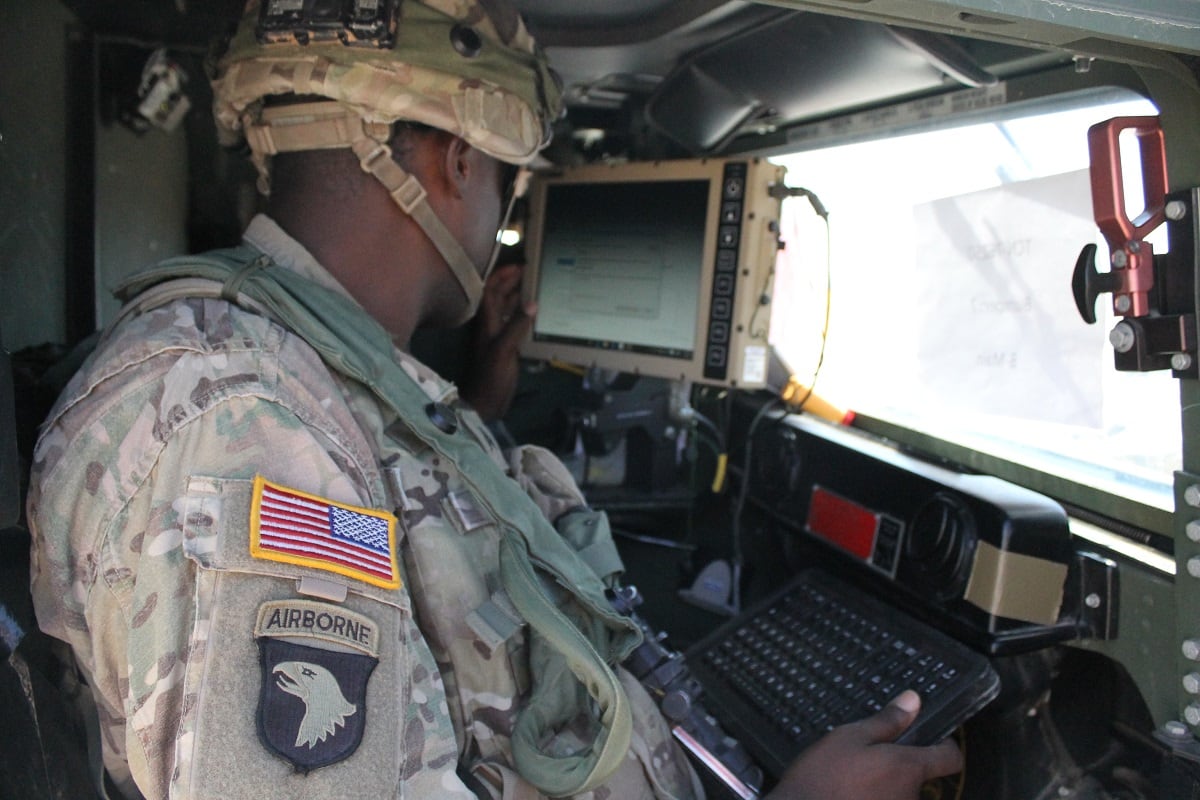The Army plans to spend more than $8.4 billion over the next five years to modernize its battlefield network, according to the Pentagon’s latest budget request and Army documents.
The plan includes about $1.5 billion more for fiscal years 2020 -2023 than Army leaders projected to spend on the network in last year’s budget request.
Network modernization is one of the top six modernization priorities for the Army’s chief of staff. These priorities seek to better posture the Army to fight and win against near peer adversaries readying the service to be “multidomain” capable by 2028.
The Army believes it will need hardened and resilient communications in the face of sophisticated jamming techniques. It also will need the ability to more rapidly share data for improved situational awareness allowing forces to be more mobile and dispersed.
“What does that network need to be by 2028? We’ve got to be able to dominate in contested environment against a peer adversary,” Maj. Gen. Peter Gallagher, director of the Army’s network cross functional team, said in February. “We’ve got to be able to conduct distributed mission command in the observe, orient, decide and act at a pace faster than our adversary. Our command posts … have to be mobile and secure and they’ve got to be able to move rapidly in a very violent, very lethal fight ... We’re going to have to move, we’re going to have to move fast and we’re going to have to be connected when we move. That’s the network we’re trying to deliver.”
The Army has developed a list of four priorities in revamping the network which they describe as “lines of effort.” The first of these priorities – to provide ensured network transport in a contested environment against a peer adversary and dominate cyber electromagnetic activities – includes five areas and covers the majority of the spending in this area.
Much of the money to support that initiative will go toward purchasing and developing new handheld manpack and small form fit radios. The Army asked for a total of $503.7 million for radios in fiscal 2020 and about $3.2 billion over the next five years. That latter figure is at least $200 million more than Army leaders projected they would spend in last year’s plan through 2023. Of the $503.7 million requested in FY20, $35.7 million come from research and development funds.
General Dynamics Mission Systems, Harris Corp., Rockwell Collins and Thales Communications are among the contractors working on the program.
The budget request also includes $427 million for the Tactical Network Technology Modernization in Service program. That program helps to enhance cybersecurity, improve resilience, and shrink the use of size, weight and power of network equipment. Army leaders expect it will cost about $2.2 billion over five years. The budget request added about $594 million to that program through 2023 since last year’s request.
Also under the first line of effort, the Army has said it wants $76 million for commercial off the shelf capabilities. This specific portion corresponds to what the Army calls the integrated tactical network, which is a mixture of programs of record and commercial off the shelf to provide greater connectivity and resiliency.
Those numbers begin to jump in the out years as listed by the Army’s future defense spending request to over $100 million each year. Overall, the Army plans to spend $511.8 million over five years.
Most of the new money for the network modernization – $1.2 billion of the $1.5 billion – is projected to go toward the first line of effort.
For the second effort, creating a common operating environment, the Army budget calls for $425.1 million for fiscal 2020. That money is spread across three separate programs.
For the Joint Battle Command-Platform, which is a blue force tracking system to follow friendly forces, the Army is asking for of $303.9 million in FY20 with $12.6 million of that amount coming from research and development funds.
The Army is asking for $12.7 in solely research and development funds for the Mounted Computing Environment, which will provide data services on tactical radio allowing information to flow in data-constrained environments, in fiscal 2020.
Last in line of effort two, the service is asking for $108.5 million for Command Post Computing Environment, a common interface from the command post to the dismounted solider. $31 million of that request is research and development funds.
The Army did not list funds associated with line of effort three, interoperability.
The fourth line of effort focuses on command post mobility and survivability. It is made up of the Command Post Integrated Infrastructure, which seeks to provide modern and survivable command posts. The Army is asking for $35.5 million for research and development funds for fiscal 2020 for that program.
Mark Pomerleau is a reporter for C4ISRNET, covering information warfare and cyberspace.
Mike Gruss served as the editor-in-chief of Sightline Media Group's stable of news outlets, which includes Army Times, Air Force Times, C4ISRNET, Defense News, Federal Times, Marine Corps, Military Times and Navy Times.








